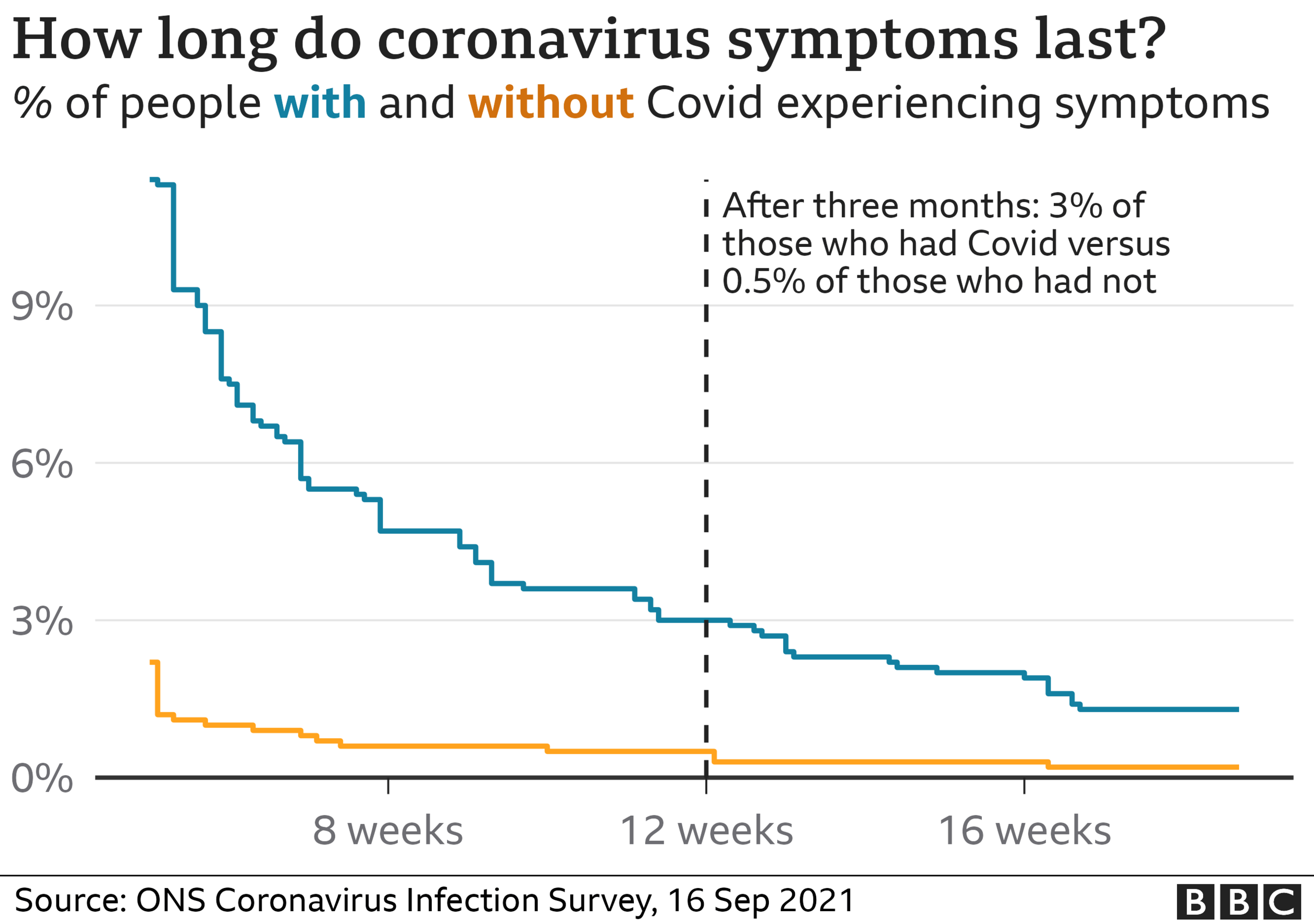Long Covid less common than feared - ONS study
- Published
- comments

One in 40 people with coronavirus has symptoms lasting at least three months, Office for National Statistics figures suggest.
In April, an ONS report, external put the proportion at about one in every 10.
The latest, large and comprehensive analysis, external suggests long Covid may be less common than previously thought.
But the condition is not fully understood and still has no universally agreed definition, leading to different studies producing different figures.
The latest ONS analysis asked two groups of people - those who had tested positive for coronavirus and those who had not - whether they had:
fever
headache
muscle ache
weakness
tiredness
nausea
abdominal pain
diarrhoea
sore throat
cough
shortness of breath
loss of taste
loss of smell
What are the symptoms of long Covid?
About 3% of people in the study who had tested positive had at least one of the symptoms for at least three months after infection.
Among those who had not tested positive, that proportion was 0.5%, meaning one in every 40 infected people had their coronavirus symptoms last for three months or longer.

And like many other reports, the analysis suggests women, 50- to 69-year-olds and people with other long-term health conditions are the most likely to have some of these symptoms 12 weeks after a Covid infection.
People with high levels of virus in their body when testing positive are also more likely to have long Covid, the analysis suggests.


Are these the best figures on long Covid?
The ONS study is big, detailed and very carefully put together.
They looked at data from more than 50,000 people, half of whom had tested positive for coronavirus.
And they were testing people at random, so we can be pretty certain that we're comparing a group of people who had Covid with another group who didn't. That's not true for all analyses.
They asked people about specific symptoms, as well as asking people to self-diagnose in another analysis.
They say their estimates are closer to the truth than the higher estimates they gave in April, because they have long-term follow-up on a lot of people and they've improved their statistical analysis.
No analysis of long Covid is perfect, and this analysis does omit some classic long Covid symptoms.
But this is a big addition to research on the condition and one that suggests that this illness is, thankfully, less common than we may have feared.

ONS statisticians point out studies from other organisations have their own definitions of long Covid with more symptoms, focus on different people (for example some include, external people with suspected Covid infections alongside those confirmed by a test) and a different way of collecting data.
Their own list of symptoms didn't include "brain fog", something commonly reported by people with long Covid.
So they also asked people whether they had long Covid - rather than about the 12 symptoms on the list.
This analysis shows around one in nine people infected with the virus said they had experienced the condition.
Kevin McConway, emeritus professor of statistics at the Open University, said the report shows that what counts as long Covid is far from clear.
He added: "It does not concern me that, at this stage in the pandemic, numerical estimates about something as new and complicated as long Covid differ quite a lot - what is important is that those involved should discuss openly what needs to be done to clarify the position.
"But the need to do that should not hold up the establishment and improvement of services to help people with these conditions, however they are defined and counted."
Related topics
- Published2 September 2021

- Published25 March 2021
